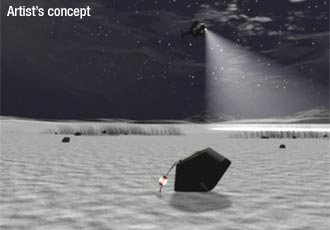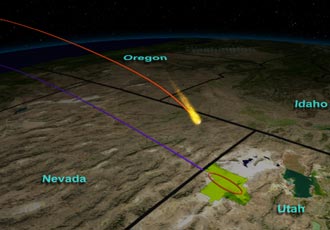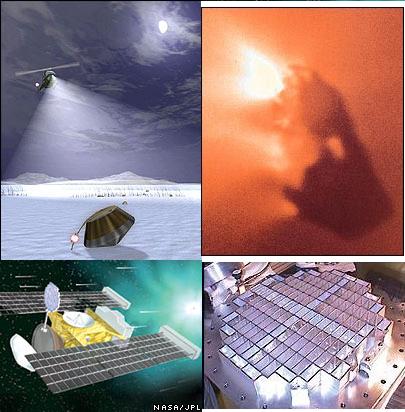soft landing. Applause in the control room. The spacecraft will be transferred in the next hour by helicopters to the US Army base in Proving Ground, Utah, for initial tests.

12: 10 Update
The CNN television channel reported that the parachutes were opened and a UHF radio signal was received, two signs indicating success for the time being.
Two more minutes to land.
12: 02 Update
At approximately 11:57 a.m. (09:57 GMT), four hours after being released from the Stardust spacecraft, the capsule entered the atmosphere and is expected to land on the salt surface in the test and training area at 12:12 p.m.

Stardust returns home today (January 15) at noon update 09:00
NASA promises that it is more powerful than Genesis, the capsule that tried to land in Utah crashed
The news agencies report that the Stardust spacecraft, which hovers at an altitude of about 100 km, released the capsule as planned at around eight in the morning Israel time, in preparation for the expected entry into the atmosphere around 12 noon.
Update 15/1/2006 time 00:00
The Stardust spacecraft is supposed to separate the capsule that weighs about 45 kg at 01:00 EST - 08:00 Israel time. The capsule is scheduled to land in Utah four hours later - 12:12 Israel time.
Update 10 / 1 / 2006
NASA published this week the schedule for the arrival of the Staraster spacecraft, and on it crumbs from the tail of the comet Wilt 2 to Earth. The landing is planned for Sunday, 15/1/2006.
On Thursday, January 5 at 18:00 GMT (20:00 Israel time) the spacecraft activated all eight of its tiny engines (4.4 Newton) for 107 seconds, with the aim of reducing its speed by about 8 km/h. The advantage required 385 grams of hydrazine.
"The maneuver went by the book," said Ed Hirst, deputy mission manager at JPL.
In the early morning hours of January 15, the Stardust mission will return to Earth from a 4.63 billion mile round trip carrying a precious cargo of cometary dust particles and interstellar particles. The scientists believe that the Stardust payload will help provide answers to fundamental questions about the origin of the solar system.
Stardust returns on January 15th
27/12/2005
The American space agency, NASA, is confident that the Stardust spacecraft will be launched to land the dust cargo it took from Comet Wilt 2 on January 15. The spacecraft collected these dust crumbs about two years ago and since then it has been making its way towards Earth.
The capsule containing the sample will enter the Earth's atmosphere faster than any other man-made object and attempt a soft landing in the Utah deserts. NASA officials emphasized at the press conference they held last week, that the capsule that will be launched from "Stardust" was designed to be extremely durable, and this in case of a hard landing on Earth. In 2004, another NASA spacecraft, Genesis, crashed while attempting to land on Earth after its parachute failed to open.
"Stardust", which was launched into space seven years ago, passed by comet 2 Wild and collected dust particles in an amount that may help astronomers learn about the formation of the planets in the solar system billions of years ago. The spacecraft will remain in space, but a 46-kilogram capsule, with the collected particles on it, will land (if all goes as planned) at a US Air Force training facility in Utah on January 15.

"2 Wild formed at the edge of the solar system, near Pluto, and remained there until not long ago it moved towards a more inner part of the solar system, where we could get closer to it and study it," said Don Brownlee, the lead researcher on the "Stardust" project. The spacecraft's collection facility approached up to a distance of about 240 kilometers from 2 Wild and was "bombarded" with millions of particles originating from the comet, of which hundreds were collected.
Astronomers believe that comets, made of ice and dust, are a product of the process by which the planets were formed. It is possible that the collisions of comets with the Earth are one of the causes of the existence of water on the Earth, which was a necessary condition for the formation of life.
